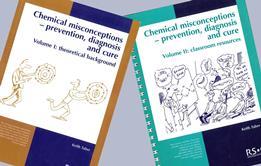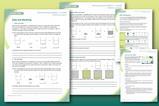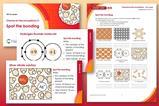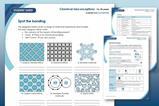Even the most basic and common chemical terms may not have clear and unambiguous definitions
Students are often found to be confused over the most basic chemical concepts, even after some years of familiarity through science lessons.
Definitions in chemistry – questions
Definitions tell us what words mean. Good definitions can be very useful, but sometimes definitions can be wrong, or just confusing. To be helpful a definition needs to be correct, and to make sense.
Below are some definitions of important words in science.
Some of the definitions below come from books, and some have been provided by young people studying science. Read each definition carefully and decide (a) if you think it is correct, and (b) whether it is a definition that would help someone learning about science.
Try to explain your reasons, if you can.
Element
- Element: A substance that is made of only one kind of atom
- Element: A substance which cannot be split up into simpler substances.
Compound
- Compound: Is made of two elements mixed together.
- Compound: A substance consisting of atoms of different elements joined together.
- Compound: A chemical substance made up of two or more elements bonded together, so that they cannot be separated by physical means.
- Compound: A product which has properties different from those of either of the component substances and which is formed with an accompanying energy change is called a compound.
Atom
- Atom: The simplest structure in chemistry. It contains a nucleus with protons and neutrons, and electrons moving around in shells.
- Atom: The smallest part of an element which can exist as a stable entity.
- Atom: The building blocks of life, the Lego® of nature.
- Atom: The smallest particle of an element that still shows the chemical properties of the element.
- Atom: The smallest particle of an element that can take part in a chemical reaction.
- Atom: Smallest particle that can be found. It is made up of protons, neutrons and electrons.
- Atom: The smallest particles that can be obtained by chemical means.
Molecule
- Molecule: The smallest particle of matter which can exist in a free state.
- Molecule: Something that is formed by two atoms bonding together.
- Molecule: The smallest portion of a substance capable of existing independently and retaining the properties of the original substance.
- Molecule: Group of two or more atoms bonded together. A molecule of an element consists of one or more like atoms; a molecule of a compound consists of two or more different atoms bonded together.
Definitions in chemistry – answers
The aim in this exercise is partly to spot incorrect definitions, but also to highlight the limitations of the standard textbook statements, which may not be that helpful to students. Which box is ticked is less important than the students’ reasoning for their choice.
Element
- A substance that is made of only one kind of atom. The meaning of ‘kind’ of atom must here apply to atomic/proton number. (The definition does not allow for existence of isotopes.)
- A substance which cannot be split up into simpler substances. This definition requires one to be able to recognise a ‘simpler’ substance.
Compound
- Is made of two elements mixed together. A compound can be more than two elements – and they are not mixed.
- A substance consisting of atoms of different elements joined together. Does NaCl (for example) consist of atoms joined?
- A chemical substance made up of two or more elements bonded together, so that they cannot be separated by physical means. This definition relies upon a clear understanding of what are ‘physical’ means.
- A product which has properties different from those of either of the component substances and which is formed with an accompanying energy change is called a compound. This implies that the compound is comprised of only two elements. The definitions also rely upon the word ‘product’ being used here in a technical sense. There are many mixtures of substances (which in everyday terms might be call ‘products’ of mixing) which seem to have different properties from the component substances.
Atom
- The simplest structure in chemistry. It contains a nucleus with protons and neutrons, and electrons moving around in shells. The nucleus is a simpler structure than the atom. (Some students may know that individual nucleons also have structure - and are therefore simpler structures still.) The sodium cation is a simpler structure than the sodium atom. Of course, the atom is the simplest structure in chemistry, if we decide that any simpler structures belong to physics!
- The smallest part of an element which can exist as a stable entity. Stability can be in terms of interacting with other chemical species, or in terms of spontaneous decay. For most elements separate atoms are labile, and will soon interact with other chemical species. For non-metals the molecule is the smallest stable part in a chemical sense. In terms of spontaneous decay, most atoms are stable, but so are most nuclei met in chemistry; and so are individual electrons, and individual protons (although not individual neutrons) - which are clearly smaller parts.
- The building blocks of life, the Lego®of nature. An interesting metaphor - although most chemical structures are not formed of discrete atoms, but of various arrangements of atomic cores and electrons.
- The smallest particle of an element that still shows the chemical properties of the element. Most chemical properties are not exhibited by individual atoms. An atom of sulfur does not share the chemical properties of sulfur. The smallest unit which could be claimed to have these properties is the molecule.
- The smallest portion of an element that can take part in a chemical reaction. Although atoms may be take part in reactions (when there is a free radical mechanism), reactants are seldom present in atomic form, and the smallest portion of a non-metallic element should be considered to be the molecule.
- Smallest particle that can be found. It is made up of protons, neutrons and electrons. Clearly particles smaller than atoms can be found with advanced scientific techniques. (In everyday terms, the smallest ‘particle’ that could be found by a student would be many orders of magnitude larger than the atom.)
- The smallest particles that can be obtained by chemical means. This would seem to be a statement with little meaning. Few chemical processes produce atoms – products are normally in the form of ions or molecules etc. However the ‘chemical means’ of an electrolytic cell will provide a source of electrons - smaller particles than atoms.
Molecule
- The smallest particle of matter which can exist in a free state. It is unlikely that most students will appreciate what is meant by a ‘free state’, but most will have television sets which work due to a beam of electrons (smaller particles existing free of atoms etc).
- Something that is formed by two atoms bonding together. Molecules often comprise of more than two atomic centres.
- The smallest portion of a substance capable of existing independently and retaining the properties of the original substance. A molecule does not share all of the properties of a substance, as some derive from the larger scale arrangement of molecules.
- Group of two or more atoms bonded together. A molecule of an element consists of one or more like atoms; a molecule of a compound consists of two or more different atoms bonded together. The second part of the sentence contradicts the first!
Notes
For the full version of this chapter, see downloads below.
Downloads
Definitions in chemistry
PDF, Size 0.17 mb
Websites
Additional information
These resources have been taken from the book, Chemical Misconceptions : Prevention, diagnosis and care: Theoretical background, Volume 2, by Keith Taber.

Chemical misconceptions

Discover classroom strategies and activities to tackle common misconceptions among students in chemistry, and explore the theory behind different approaches.
- 1
- 2
- 3
- 4
- 5
- 6
- 7
- 8
- 9
- 10
- 11
- 12
- 13
- 14
- 15
- 16
- 17
 Currently
reading
Currently
reading
Definitions in chemistry
- 19
- 20
- 21
- 22
- 23
- 24
- 25
- 26
- 27
- 28
- 29
- 30
- 31
- 32
- 33
- 34
- 35
- 36





























































































No comments yet